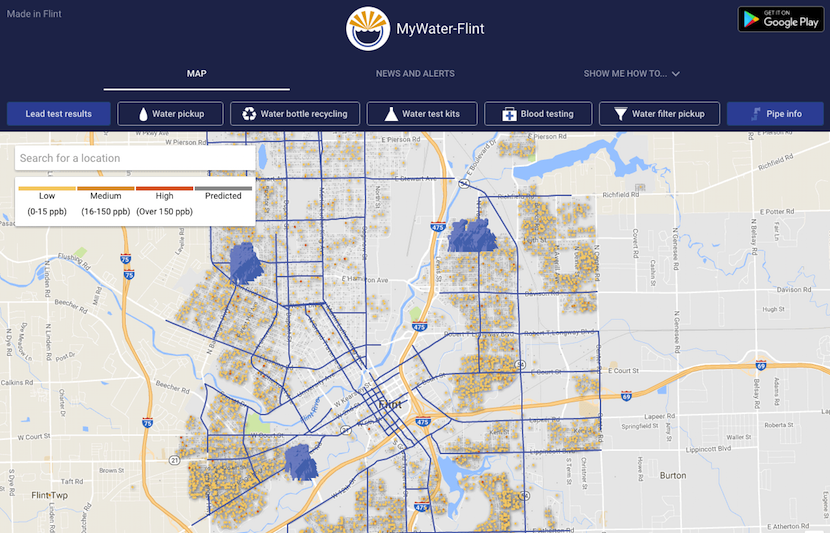-
UMich Students Help Flint Residents Find Clean Water
Mywater-Flint, a joint project between University of Michigan-Flint and the Michigan Data Science Team at the University of Michigan-Ann Arbor, was launched December 8. The mywater-flint web app — a direct response to the Flint water crisis (in which dangerous levels of lead were found in the city’s water supply)— displays a map of the city where… Read More





